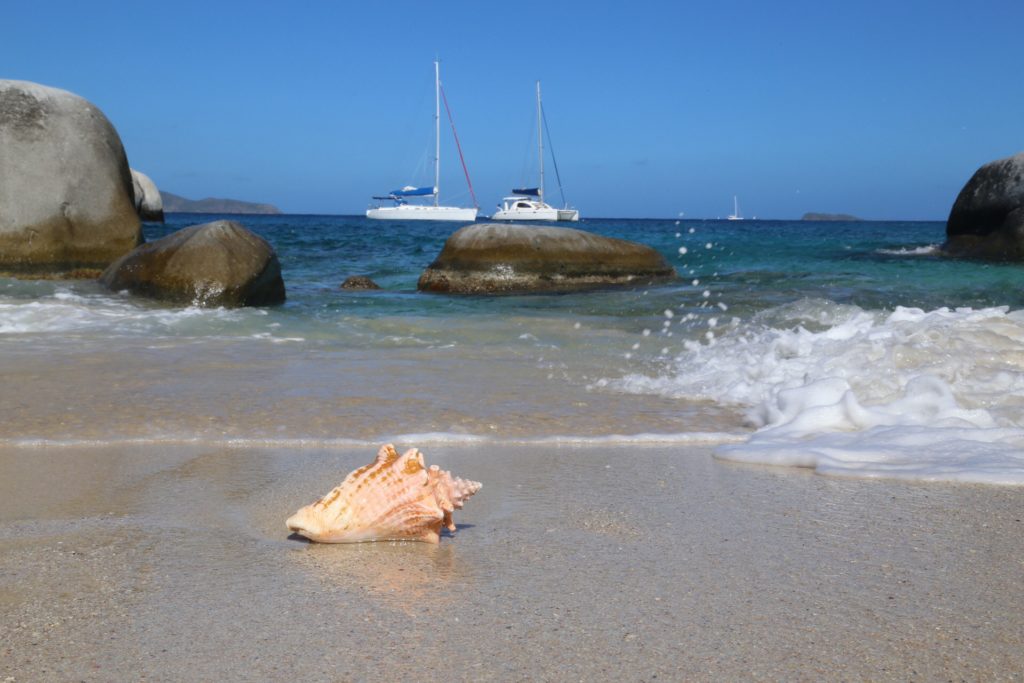
Choosing a Boat
Most charterers want to experience a bigger boat, and your charter company will give you a good idea of what you are ready to charter based on your sailing experience. If this is your first time chartering and you’re unsure about sailing a bigger boat, look to move up to something a size or two larger than the boat you are accustomed to sailing. The three primary factors in choosing a boat are number of heads (and cabins), monohull or catamaran, and a few important extras to consider.
How Many Heads?
Larger boats typically have a head for each cabin, which is very convenient for the crew. Smaller boats may have a shared head between two cabins, or one for the boat on the smallest boats. Keep in mind that heads on sailboats are small and because they are ventilated with a single window and used as shower, sink, and toilet, it’s typically easier for family members to share a head. Friends or strangers may not find it as easy.
Monohull or Catamaran?
The debate between monohull and catamaran is perplexing because there is no one right answer. Having sailed both on charters in the BVI, here are the pros and cons of each.
Monohulls give that true sensation of really sailing, because they heel over even in a gentle wind, where catamarans will stay level even in a stiff breeze. Monohulls are also a familiar boat to every sailor, which means one less new variable if you are sailing in a new place. Monohulls are also significantly less expensive than catamarans to charter, often as little as half the price for the same number of cabins.
Catamarans are growing in popularity, and charter companies are adding more and more catamarans to their fleets to meet the demand. Catamarans have significantly more interior and deck space, which is appealing for larger crews. Although catamarans are wider and therefore a little more challenging to navigate through a narrow anchorage, they have two engines which makes them able to turn in a much tighter radius. Catamarans also have a shallower draft, which is an advantage in some waters (note that the BVI has generally deep enough waters for cats or monohulls, so this shouldn’t be a major consideration.)
In a stiff breeze, a sailor on a catamaran must pay close attention to know when to reduce sail, because the familiar heeling will not be present as a warning.
All this said, which is better for your charter? If you have novice crew aboard who may get motion sickness, a catamaran is clearly a good choice. If budget is a factor, then monohulls become the clear choice. Beyond that, you really can’t go wrong with either.
Note that if you are new to sailing a catamaran, there are differences. The best book available on catamaran sailing for monohulll sailors is Catamarans: The Complete Guide for Cruising Sailors, which is available here from Amazon and it is also available as an ebook for kindle, ipad, etc.
A Few Extras To Consider
Do you need Air Conditioning? If sailing during the summer months, air conditioning is a must. The air is a little warmer and more humid, and the winds not as consistent and strong. Boats on a mooring or anchor are cooled by opening hatches that face forward, into the wind. When there is no wind, it will take an air conditioner to cool the boat to a comfortable temperature at night.
Do you need a Generator? If crew want to use a lot of electronic appliances like hair dryers, blenders, or microwaves, a generator is a must. Not all boats come equipped with generators, so be sure and check the details when booking your charter.
Note that most boats lacking generators do come equipped with power inverters which enable you to charge low power electronics like camera batteries, phones, and tablets. Confirm the availability of inverters when booking your charter and make sure they will meet your crew’s power needs.
Next: Choosing a crew
